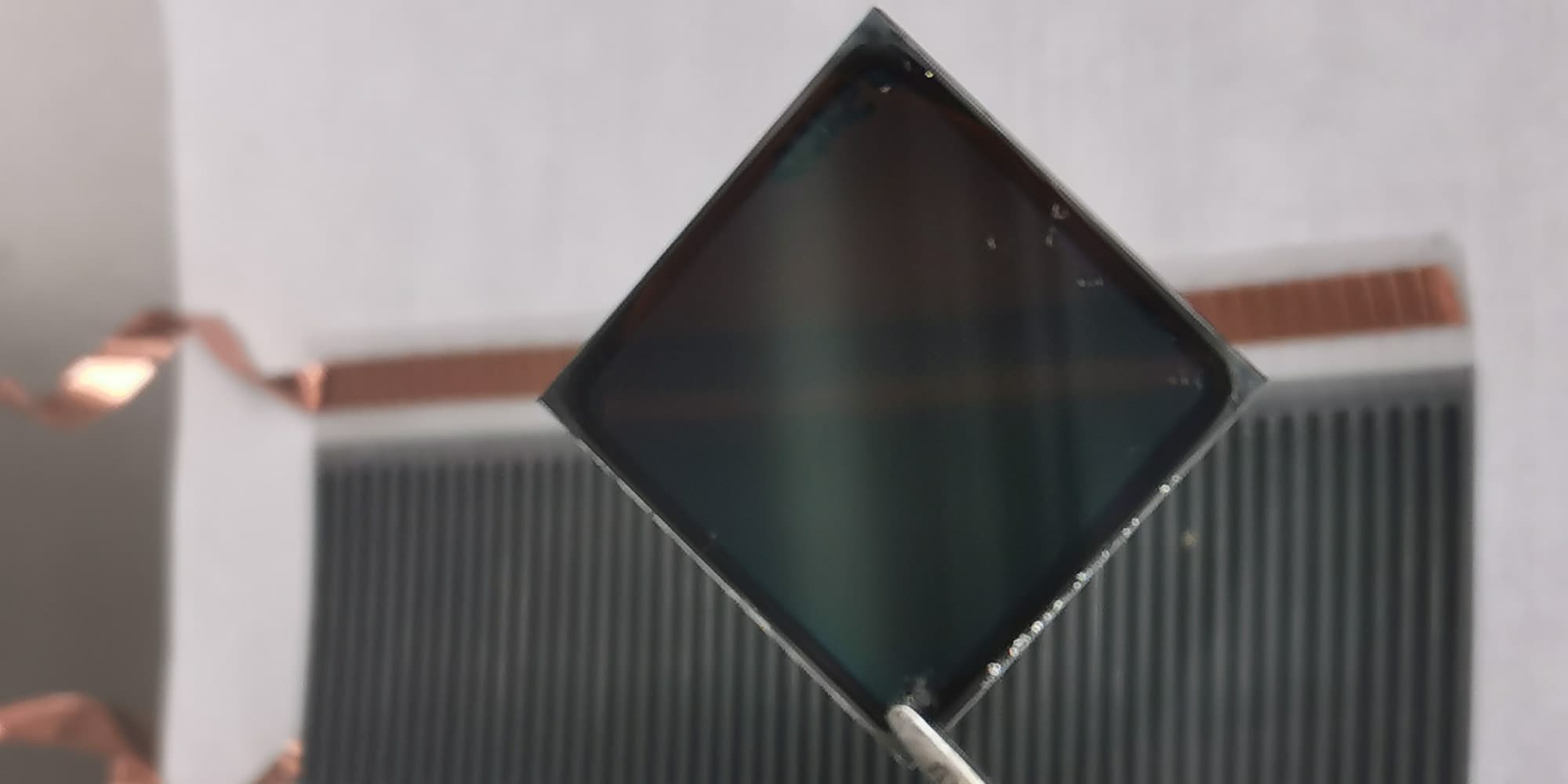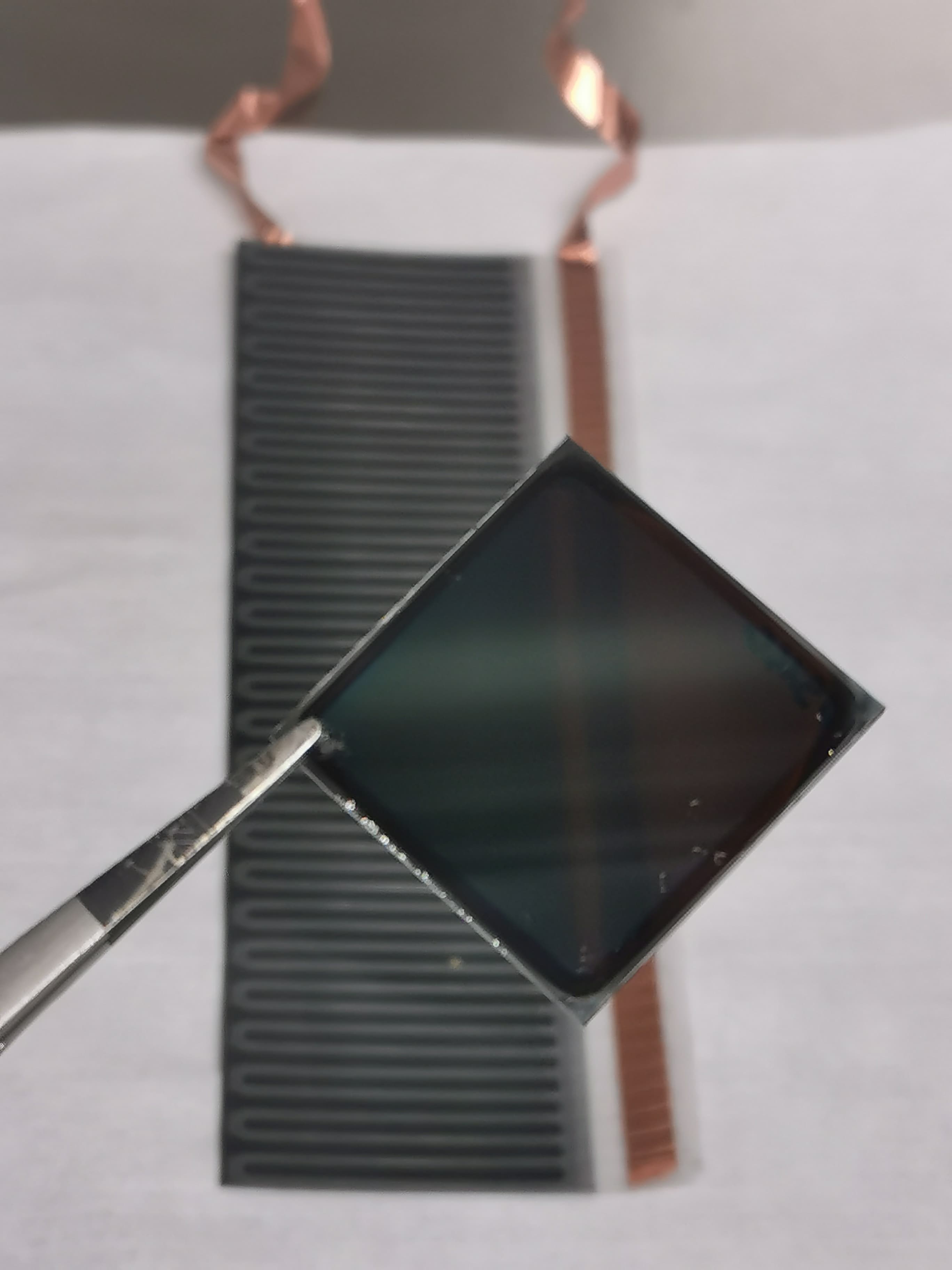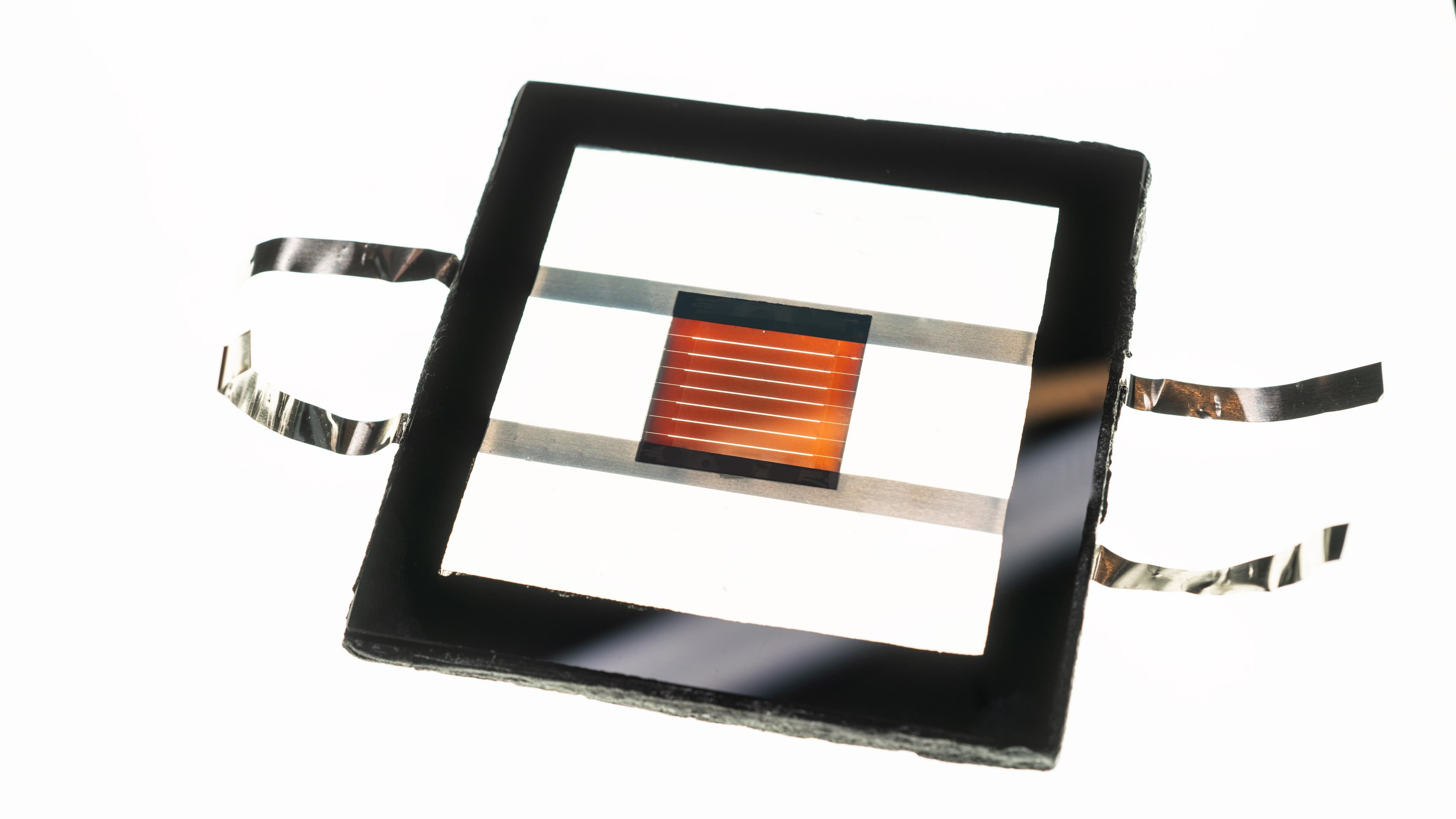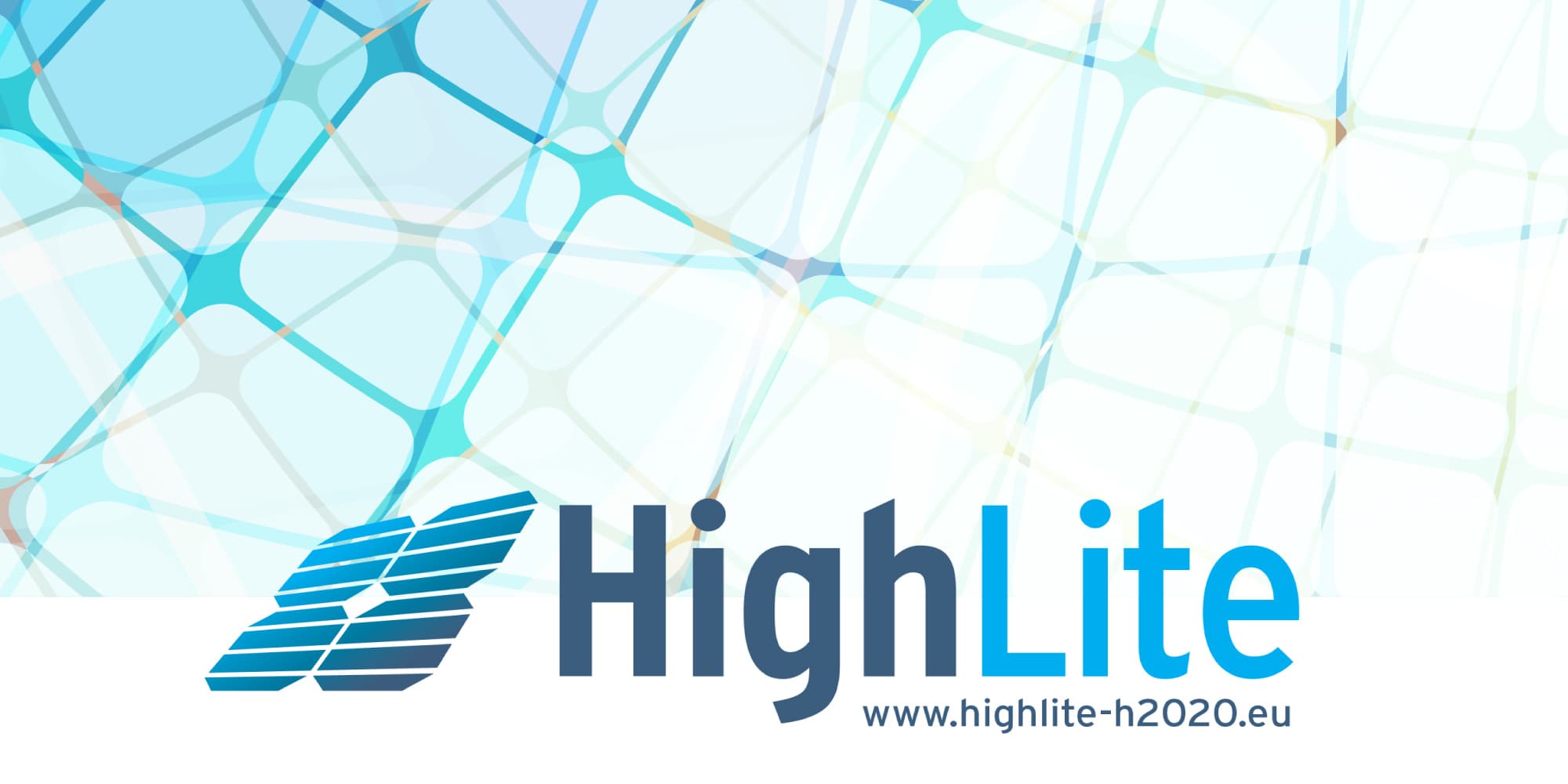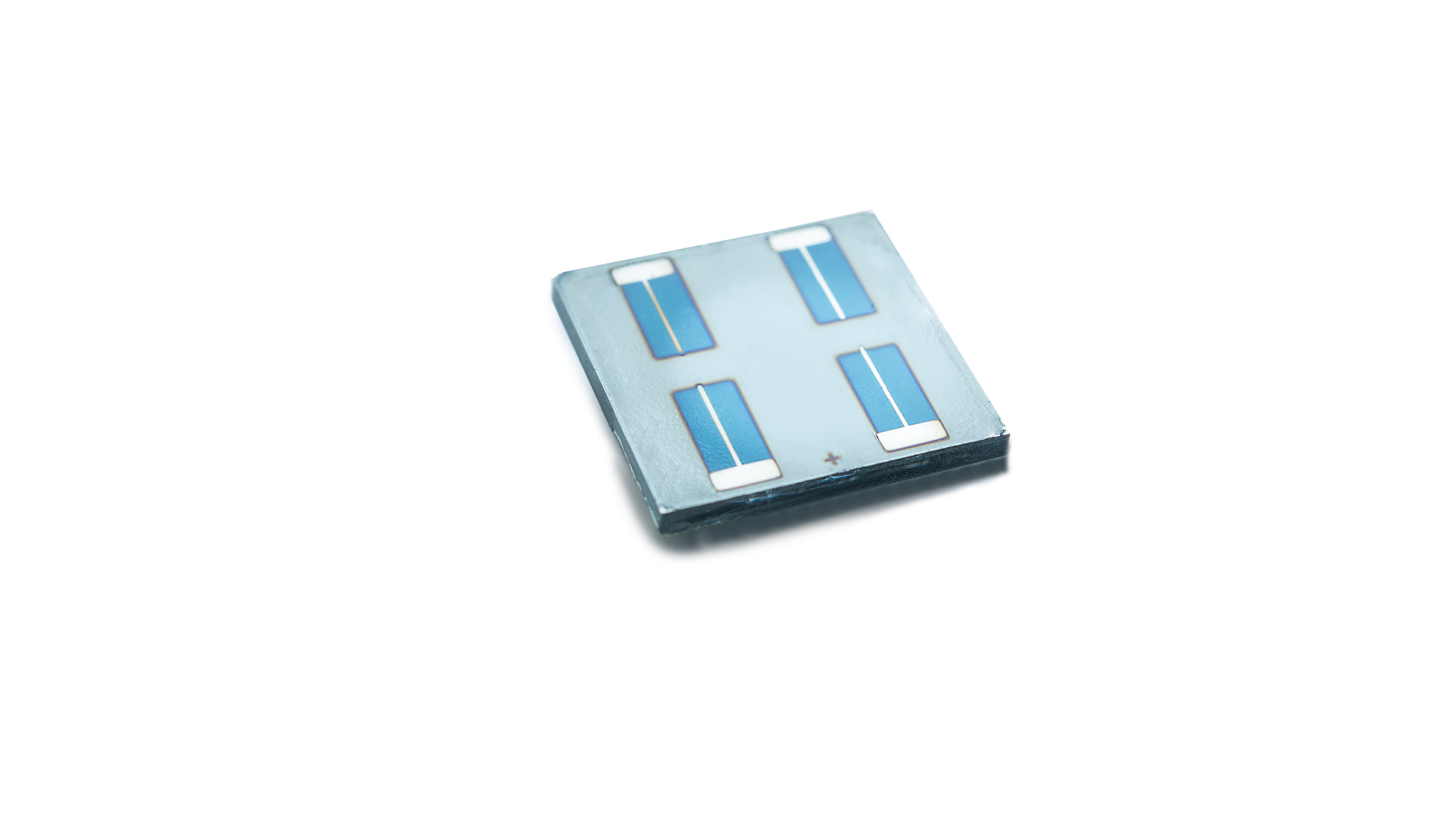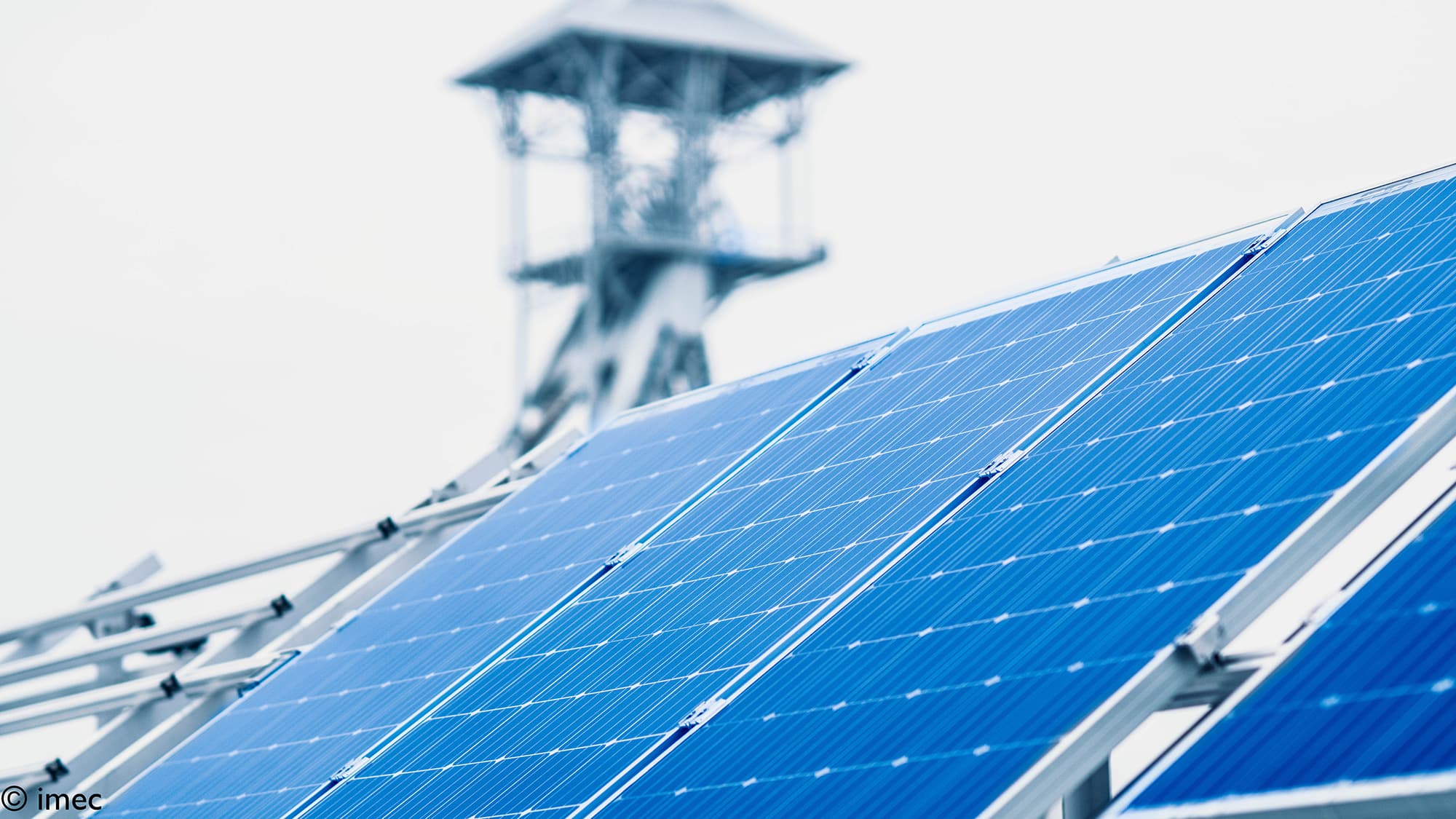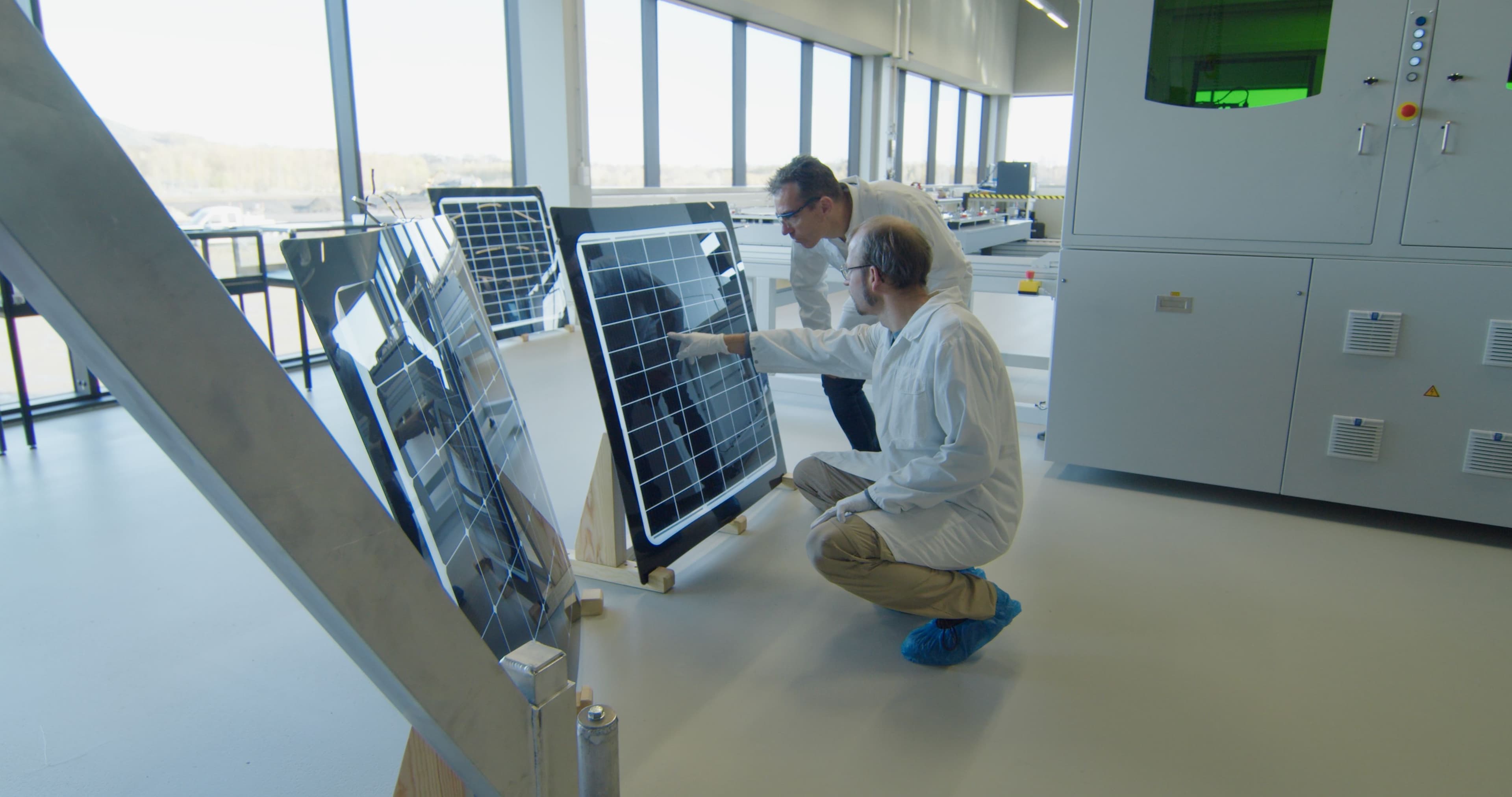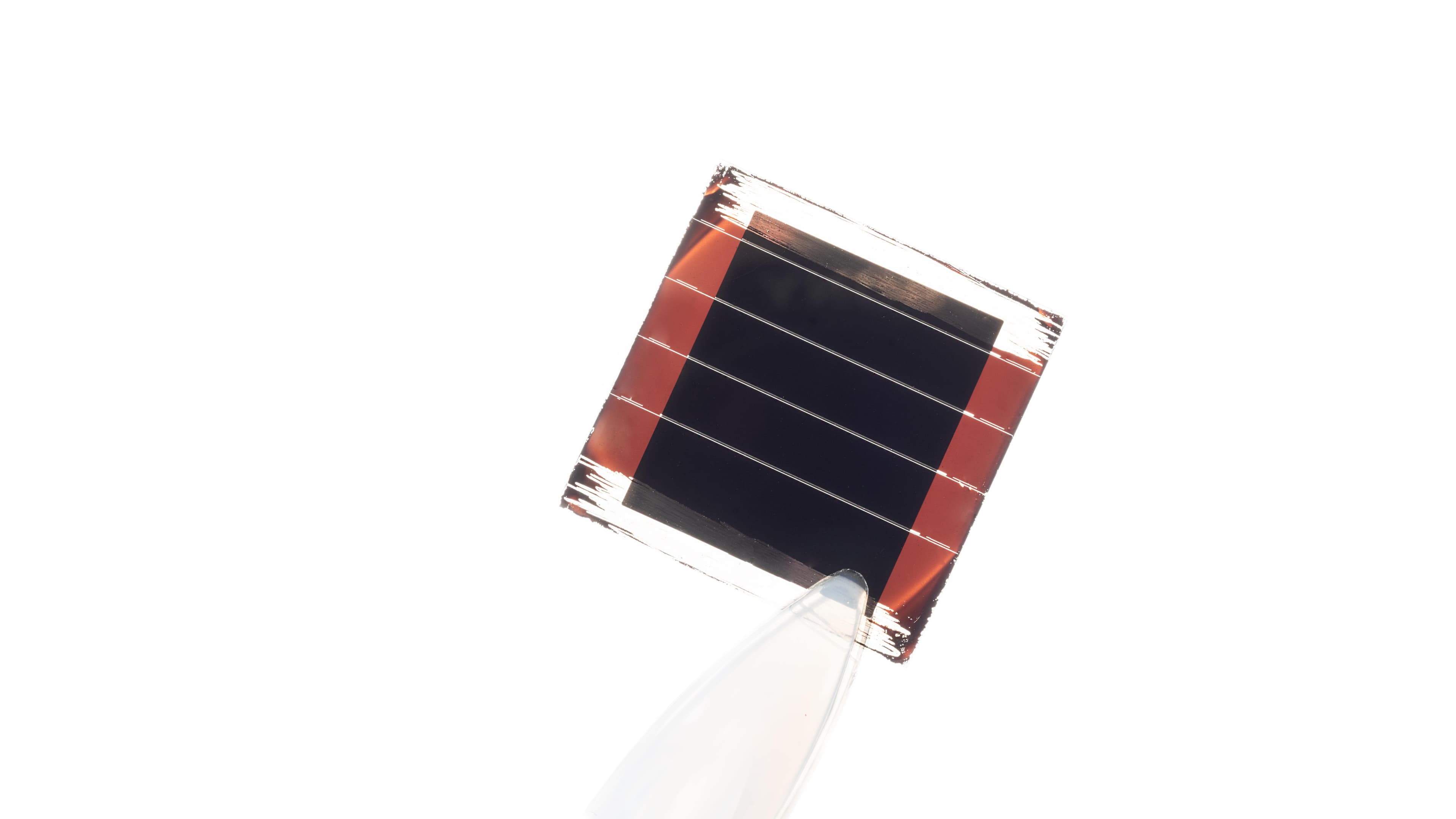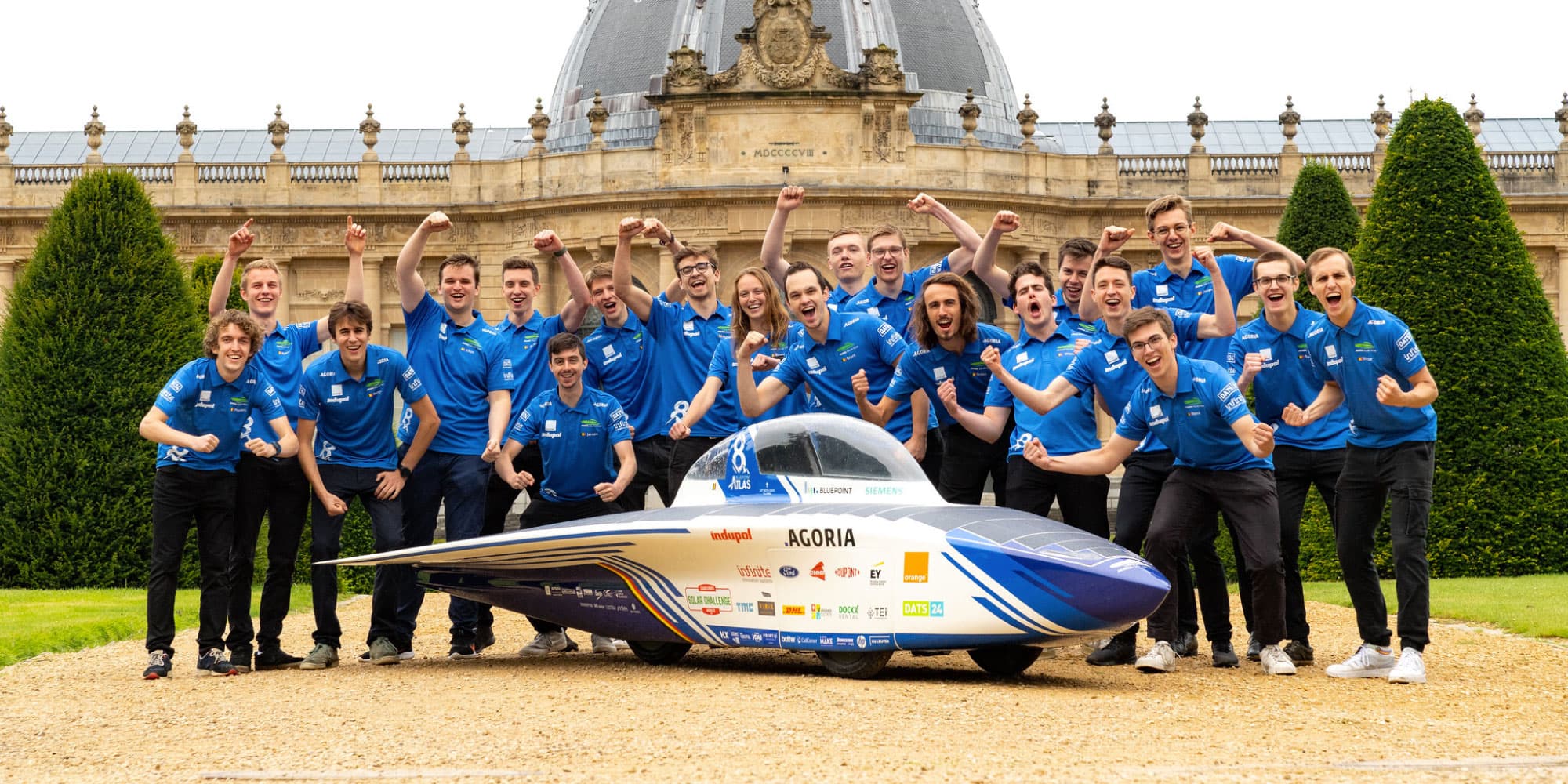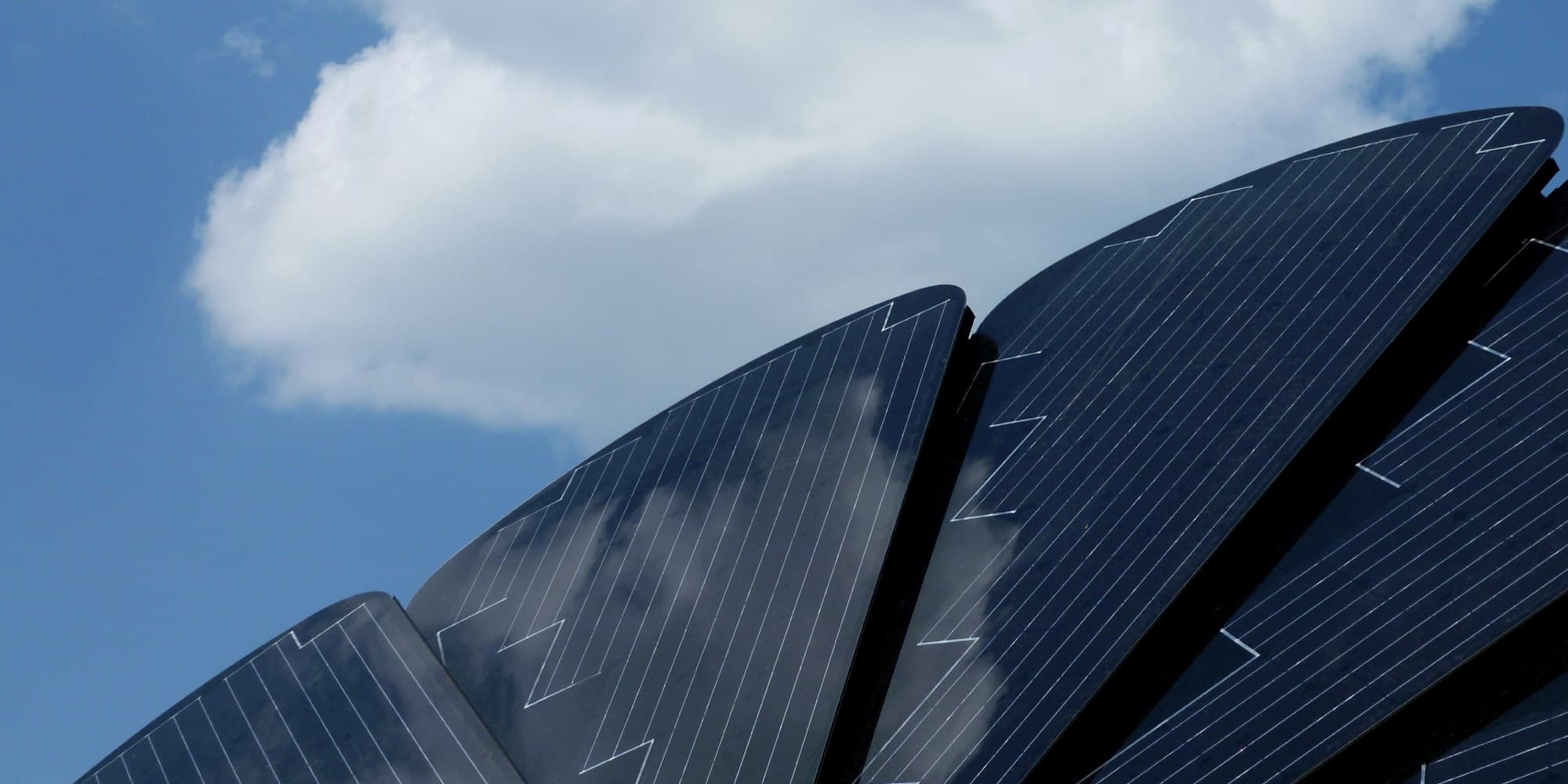HASSELT (Belgium), Feb 26, 2020 —Scientists from Hasselt University, imec, VITO, EnergyVille and international partners within the PERCISTAND consortium have become the first to achieve an energy efficiency of 25 percent with a thin-film solar cell. This means that this wafer-thin solar cell generates as much energy as a traditional silicon solar cell. ‘In addition, our solar cells are thin and flexible, making them ideal for integration into buildings and roofs,’ says Prof. Bart Vermang (Hasselt University/imec/EnergyVille). ‘With these thin-film solar cells, we are truly competitive with the traditional solar panel sector for the first time.’
‘Pioneering’: that’s how Bart Vermang, coordinator within the PERCISTAND consortium, describes the development of thin-film solar cells. The consortium, which partly consists of the collaborations within EnergyVille and Solliance, has succeeded in achieving a record energy efficiency with thin film solar cells. ‘We’ve achieved an energy efficiency of 25 percent for the first time, which is just as much energy as a traditional solar cell can generate on a day-to-day basis. And we haven’t yet reached the upper limit of our thin-film solar cells.’
‘We use two types of materials to achieve this record efficiency, which we lay on top of each other,’ says Bart Vermang. ‘A traditional solar panel consists of a single layer, usually of silicon. For these solar cells, we use two different materials that reinforce each other. Our consortium is a collaboration of what we can safely call the best thin-film solar cell research groups in the world. Some of the partners are working on the bottom cell, while others are working on the top cell. In recent weeks we’ve combined the best bottom and top cells, which is how we have already achieved this high efficiency level of 25 percent. Our ambition now is to generate an energy efficiency of 30 percent within the next three years.’
Thin-film competitive with traditional market
‘We will really be able to compete with traditional solar panels with this,’ says Bart Vermang. ‘Our solar cells are made from wafer-thin, flexible material, so that you can develop solar panels in all colours and sizes that you can integrate into the façades or roofs of homes.’ And because the solar cells are so thin, less material is needed to make solar panels. ‘This will make these solar panels even cheaper than the traditional ones,’ says Bart Vermang. ‘Within this project we’re also working with economists to analyse the cost of these solar cells. In this way we hope to have a business model ready by the end of the project with which businesses wishing to produce these solar cells can get started.’
When will members of the public be able to purchase thin-film solar panels? ‘For the moment we managed to get these efficiency results in solars cells of approximately 1cm². I imagine that the panels will be available on the market within eight years. There are still a number of obstacles to overcome. For example, we can already lay the top cells on the bottom cells and generate energy, but a cost-efficient way still needs to be found to combine the two layers in a module. Our engineers at Hasselt University and imec within EnergyVille, are currently working on this. And we’ll definitely get there,’ concludes Bart Vermang.
The PERCISTAND research project has been awarded 5 million euros of funding from the European Horizon 2020 programme under grant agreement No 850937. The consortium consists of twelve international partners: Hasselt University, imec, VITO, TNO, Zentrum für Sonnenenergie- und Wasserstoff-Forschung Baden-Württemberg, Karlsruhe Institute of Technology, Empa Switzerland, National Centre for Scientific Research – Institute PV France (CNRS-IPVF), Solar Switzerland, NICE Solar Energy, Australian National University, National Renewable Energy Laboratory USA.
Imec's R&D on thin-film PV (TFPV) is part of Solliance, a partnership of R&D organizations from the Netherlands, Belgium and Germany.
About Hasselt University
Hasselt University (Dutch: Universiteit Hasselt, UHasselt) is a university with campuses in Hasselt and Diepenbeek, Belgium. It was officially established in 1971, but it was not until 1973 that the university – literally – opened its doors and welcomed its first students. Academic and scientific freedom, social commitment, attention for ethical norms and interpretation – without ideological distinction – are basic principles of its education and research policy.
True to its baseline ‘Knowledge in action’, Hasselt University has grown into an innovative and dynamic university – an institution which provides for a qualified workforce, locally adapted research, appropriate services and technologies for the region. The university has seven faculties (Law, Sciences, Business Economics, Medicine & Life Sciences, Rehabilitation Sciences, Architecture & Arts and Engineering Technology), two Schools (Transportation Sciences and Educational Studies) and six research institutes (which cover a wide range of research areas: biomedical, environmental, statistical, material, transportation research and media technology research).
UHasselt is home to about 6,500 students and 1,400 academic, administrative and technical staff members.
More info: www.uhasselt.be (Twitter: @uhasselt / Facebook: www.facebook.com/uhasselt)
About imec
Imec is a world-leading research and innovation hub in nanoelectronics and digital technologies. The combination of our widely acclaimed leadership in microchip technology and profound software and ICT expertise is what makes us unique. By leveraging our world-class infrastructure and local and global ecosystem of partners across a multitude of industries, we create groundbreaking innovation in application domains such as healthcare, smart cities and mobility, logistics and manufacturing, energy and education.
As a trusted partner for companies, start-ups and universities we bring together more than 4,000 brilliant minds from over 97 nationalities. Imec is headquartered in Leuven, Belgium and has distributed R&D groups at a number of Flemish universities, in the Netherlands, Taiwan, USA, and offices in China, India and Japan. In 2018, imec's revenue (P&L) totaled 583 million euro. Further information on imec can be found at www.imec-int.com.
Imec is a partner in EnergyVille (www.energyville.be), a collaboration of the Flemish research centers KU Leuven, VITO, imec and UHasselt in the field of sustainable energy and intelligent energy systems, as well as in Solliance, a partnership of R&D organizations from the Netherlands, Belgium and Germany working in thin-film photovoltaic solar energy (TFPV).
Imec is a registered trademark for the activities of IMEC International (a legal entity set up under Belgian law as a "stichting van openbaar nut”), imec Belgium (IMEC vzw supported by the Government of Flanders), imec the Netherlands (Stichting IMEC Nederland, part of Holst Centre which is supported by the Dutch Government), imec Taiwan (IMEC Taiwan Co.), imec China (IMEC Microelectronics (Shanghai) Co. Ltd.), imec India (Imec India Private Limited) and imec Florida (IMEC USA nanoelectronics design center).
About EnergyVille
EnergyVille is a collaboration of the Flemish research institutes KU Leuven, VITO, imec and UHasselt in the field of sustainable energy and intelligent energy systems. Our researchers provide expertise to industry and public authorities on energy-efficient buildings and intelligent networks for a sustainable urban environment. This includes, for example, smart grids and advanced district heating and cooling.<
One of the objectives of EnergyVille is to become a top of European innovative energy research initiative. In this context, the center was embedded in major national and international networks right from the start. It covers research, development, training and innovative industrial activities under one name and in close collaboration with local, regional and international partners. EnergyVille aims to be a driver in the Thor science park in Genk in the areas of research, business development and employment creation. The research collaboration is supported by the city of Genk, the Flemish Government, The Province of Limburg, LRM, Nuhma, POM Limburg and the European structural funds.
Published on:
26 February 2020

